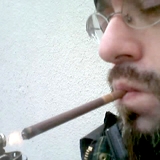This one time us trogs were on an extended twenty-day exploratory and mapping jaunt. The base camp, supplied for thirty days, just in case things went haywire, was in a huge cavern about a half a mile deep with its own supply of fresh-ish water, but we were on channels down, water-carved, to be sure, where the water picked up too many naughty metal salts to be healthy. We were far enough down that it was starting to get warm again, finding steam vents a little too warm for them to be comfortable and sauna-like.
We’d long stopped ignoring the pretty flow-stone formations and were onto the trail of increasingly huge selenite spars, where huge in this case was maybe the length of an arm. I’d begged for years to be taken on a trip to one of the two places the world knew about where they were as big as houses, and that was an ordeal that was worth it. It was the steam room in Superman’s Fortress of Solitude, and it was a mankiller, cook you through like a shrimp in a steamer while you stood around goggling. The truth was I’d been in the maw of an underground beast with a mouthful of broken teeth, being digested in the little boil-in-bag of the protective suit I was wearing. And I’d do it again, with better portable air-conditioning and more bottled air, because there had to be something more amazing further on. But that was another trip.
This one was what you’d expect — if you knew what to expect where a tectonic plate cracked and one edge pushed up on top of the other edge and basically made a path where you could just saunter nearly horizontally down the crevices, down to the earth’s mantle. Okay, it was never that easy, but spelunking is full of paths you just can’t take regardless of how huge the cavern is on the other side of the hole you dangled the camera down. Finding a series of connected paths where there were plenty of places to rest and the slope averaged no steeper than maybe fifty or sixty degrees … well, some of my hardcore cavers — some legit geos, but a couple of sherpas and rock-jocks — were on my ass for taking them on a hike to Disneyland.
The biggest part we’d screwed up on was that a jaunt this easy, well, comparatively speaking, anyway, was easy for wildlife as well. We were seeing signs of biomass, stuff I personally didn’t recognize, and while we were taking care not to stomp all over it too much, we should have brought someone who might have been able to understand what we were seeing. I’d taken a class and attended a couple of seminars, but we really needed someone along who could have taught the classes. Like they didn’t let me run trips like this until I’d been teaching for ten years.
We weren’t quite in extremophile territory — a super-lost bat could get down here and theoretically back out again as a day-trip, and would probably even live if he didn’t stop to drink the water. Though I wasn’t too sure it was really bad stuff. It could be the worst thing would be argyria if you drank it for more than a couple of months. Your first attempt at a suntan would turn you Bizarro blue. I had a bottle for a sample of what would be the lowest point for each day’s exploration, give or take. It was more gentle than drilling a core sample but brought back similar data.
Like me, water picks up a little bit of everything as it goes along.
It’s been more than twenty years since we thought that every living thing needed sunlight. Or to eat something else that needed sunlight. And sunlight certainly didn’t make it that far down. A single lost bat couldn’t feed too much down there for too long, so anything we found that far down really had to be an enclosed system, though it was possible that it could be derived from an invasion from above, slowly winding down.
My favorite was the puddle. We carried plenty of light, mostly LED since we didn’t need the heat of carbon lamps at this depth, and boy did we appreciate the lack of weight and fuss. But when the light hit this puddle up ahead, ripples spread out from the center like someone had thrown a pebble in. Or maybe we had timed it perfectly to catch a drip from above. We were close enough to bingo fuel, energywise, just enough to get us back to camp without wrecking ourselves, so I shuffled forward to get a sample of it to carry back for analysis. But by the time I made it to where the puddle should have been, it was gone.
I was far too old a hand with this stuff to think I’d gotten turned around, but when I asked for people to help me look for it, there was chuckling. Even so, we were kind of shocked to see that it was a few feet ahead of where we knew it to be. And still rippling. I pulled out a pair of disposable gloves, scooped a sample into a vial, wiped it down, dropped it into a baggie, then stripped the gloves and dropped them and the tissue I’d used for wiping down the vial into another baggie for later disposal.
When I turned back again to take another look at the puddle, it was gone again. And it was about five feet further along. It was running away.
It was about then that we felt the first of the tremors. “High-tailing it” back to camp was still a five-hour ordeal, but it seemed the thing to do. We couldn’t make contact with the NEIC about the tremors, or at all, for that matter, or the USGS, or the university, and we decided that was odd, but we did find that the topside radio gear had relayed down a cryptic message that there was something wrong with the sun and that we should consider staying below ground until supplies ran out or someone came to get us. And good luck.
We were supposed to be down for another two weeks regardless, so we just sent back a confused acknowledgment and went back to work. In retrospect, what else could we have done anyway?
[*]






